Clarifiers / Metal Reactor Unit (MRU)
Physical-Chemical Treatment (PCT) Systems
Industrial wastewater contains pollutants which often cannot be removed efficiently by microorganisms used by most municipal biological plants. Therefore, a pre-treatment system consisting of physical and chemical separation of the pollutants is required. A Phys-Chem
A physical process usually treats suspended, rather than dissolved pollutants, while a chemical process enables the separation of dissolved pollutants that are later removed physically.
A chemical treatment processes, in an industrial setting, would be
- pH adjustment I order to aid in the precipitation of metal, for example.
- Coagulation with metal salts involves the addition and rapid mixing of a pre-determined, appropriate concentration of alum, iron, lime or other salts
-
Flocculation with polymer would cause the fine coagulated particulates clump together into floc. The floc may then float to the top of the liquid, settle to the bottom of the liquid, or can be readily filtered from the liquid.
-
Oxidation is the process of converting highly toxic substances such as cyanides used in mining and metal finishing industries into harmless carbon dioxide and nitrogen by Oxidizing them with chlorine.
- Destroying organic chemicals by oxidizing them using Ozone or Hydrogen Peroxide, either alone or in combination with catalysts such as Ultraviolet light
Filtration through a medium such as sand, bag filter or activated carbon as a final treatment stage can result in a very clear water. Ultrafiltration, nanofiltration, and reverse osmosis are processes which force water through membranes and can remove colloidal material (very fine, electrically charged particles, which will not settle) and even some dissolved matter. Absorption (adsorption, technically) on activated charcoal is a physical process which can remove dissolved chemicals. Air or steam stripping can be used to remove pollutants that are gasses or low-boiling liquids from water, and the vapors which are removed in this way are also often passed through beds of activated charcoal to prevent air pollution. These last processes are used mostly in industrial treatment plants, though activated charcoal is common in municipal plants, as well, for odor control.
Here are three of our most popular models:
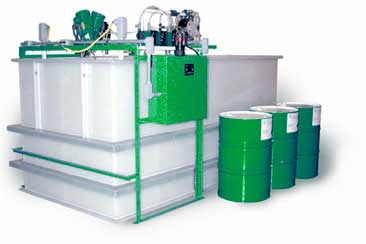 |
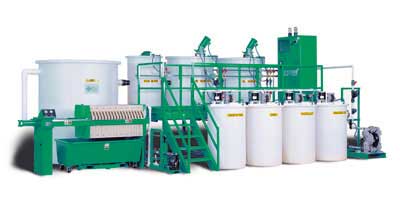 |
| Module
1500
Ecologix Module 1500 is
a fully automatic, continuous flow wastewater
treatment system that handles 10 gpm. The compact
Module 1500 requires only 10 x 18 feet of floor
space. |
Module
2000
The Ecologix
Module 2000 is a fully automatic, continuous flow
system capable of treating 20 gpm. The standard
system requires only 16 x 20 feet of floor space,
and it features the latest advancements in wastewater
treatment technology, including the most advanced
controls on the market today. |
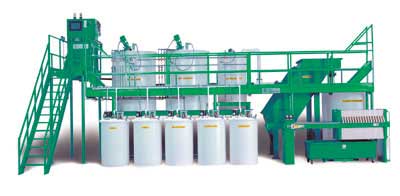 |
|
| Module
6000
The Module 6000 Metal Reactor
Unit from Ecologix offers fully automatic operation
and handles up to 60 gpm, although it requires
only 15 x 28 feet of floor space. Controlled by
Ecologix most advanced control center, the E-Controller/10,
the Module 6000 represents the state-of-the-art
in automated treatment today. |
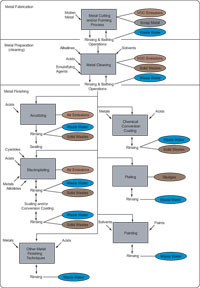 Click image to view |
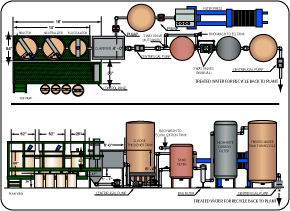 Metal Reactor System Configuration |


